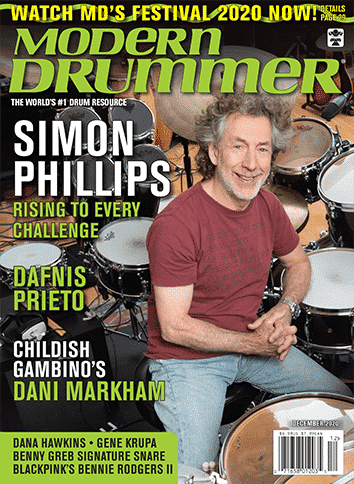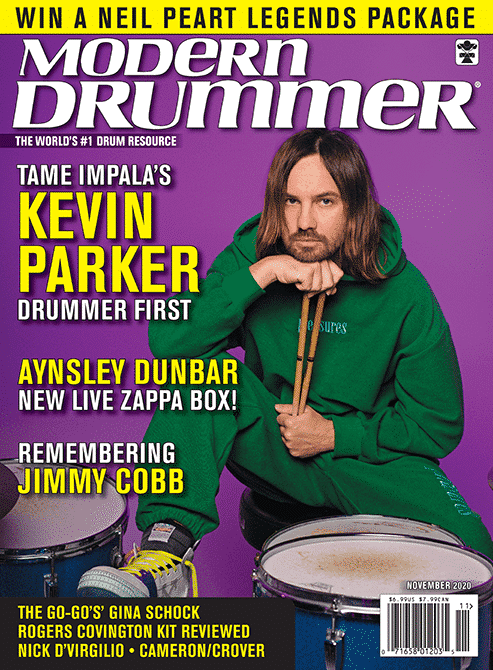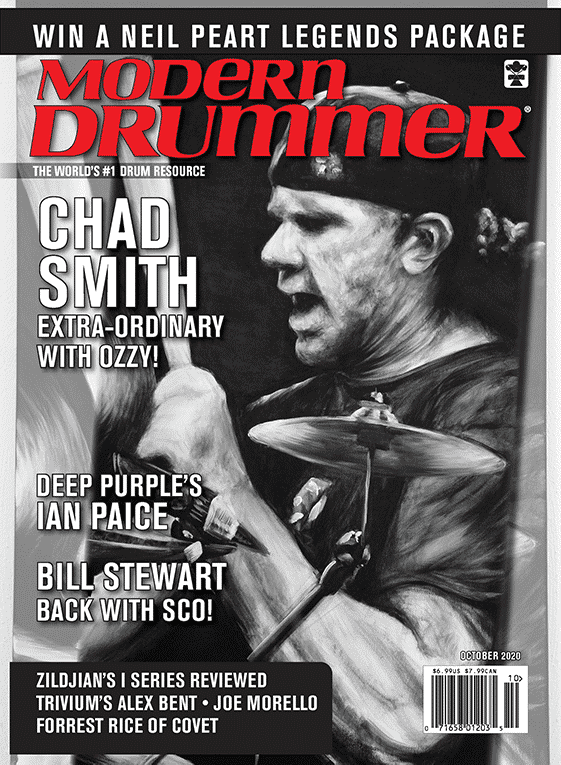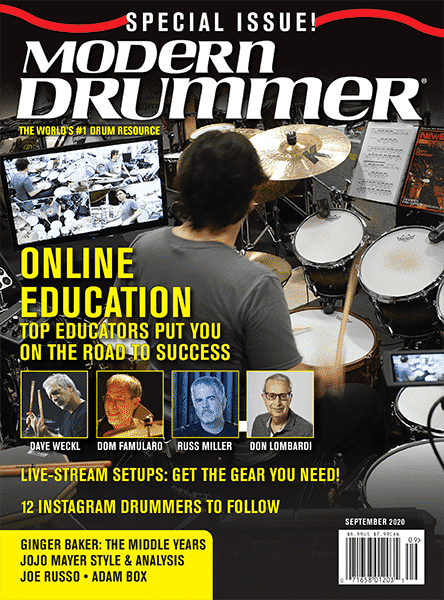Bill Bachman: Top 10 Rudiments Part 7: Flam Accents

The flam accent is included because of its unique hand motion, which involves a downstroke with a quick transition into a low triple beat. Mastering the flam accent will open doors that allow you to play many other rudiments, as well as numerous patterns on the drumset that may seem unrelated. I can’t remember the last time I played flam accents on the kit, but because I can do so, my hands have the ability to execute many other useful musical ideas.
To play quality flam accents, we must first take a look at the individual hand motion shown in Exercise 1. Each hand plays a high accent stroke followed by three low tap strokes. Those tap strokes technically consist of an inner beat, a grace note, and another inner beat, but in the flam accent context they’re straightened out into one rhythmically even triple beat. (A flam between the two hands is created by laying the accent back just behind the grace note.) The accent will need to be played as a downstroke. Be sure to quickly stifle the stick’s rebound after the accent in order to freeze the stick pointing down toward the drum. All activity must stop at this point, so that you can get a fresh start with loose fingers playing the low and relaxed triple beat.
Here are two downstroke tips to help you sidestep common roadblocks:
1. Avoid hitting the accent extra hard with a tight stroke where the fingers are still busy squeezing the stick when they should actually be starting to play the relaxed triple beat.
2. Avoid letting the accent bounce up high, leaving you unable to initiate the triple beat at the correct low stick height. A high bounce can also cause you to play rhythmically late as you wait for the stick to get back down to the drumhead.
Advertisement
Playing flam accents at different speeds will require little changes in technique. At slower tempos, you can play all of the strokes easily using the wrists. As you get to a medium speed, you’ll need to start using the “alley-oopoop” finger-control technique on the triple beat to support the second and third beats. Otherwise the wrist will get tight as it struggles to keep up, or the beats will weakly bounce down to nothing. As you get faster, you will eventually hit a speed where there isn’t enough time to completely stop the stick between the accent and the low triple beat. At this point it’s okay to let a bit of the accent’s energy flow into the low triple beat instead of completely stopping the stick. The fingers should now squelch some of the accent’s rebound as they push the stick back to the head to start the triple beat. The faster you can go while still stopping the stick for controlled stick heights and dynamic contrast, the better. After all, if the triple beats bounce up too high, then you no longer have an accent.


This article is culled from Bill Bachman’s popular Stick Technique book, which is designed to help players develop hands that are loose, stress free, and ready to play anything that comes to mind. The book is for everyone who plays with sticks, regardless of whether you’re focusing primarily on drumset, orchestral percussion, or the rudimental style of drumming. Divided into three main sections – Technique, Top-Ten Rudiments, and Chops Builders – Stick Technique is designed to get you playing essential techniques correctly and as quickly as possible. Also includes a bonus section two-hand coordination and independence.






